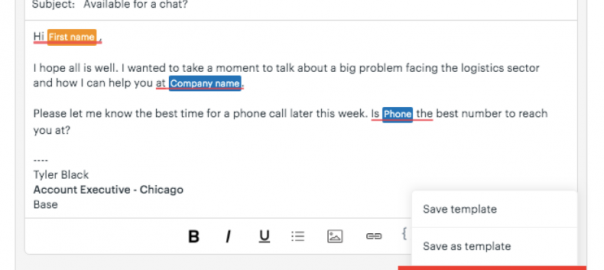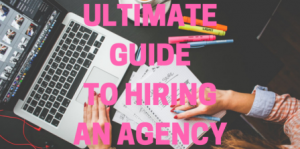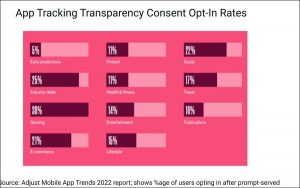— June 28, 2019
Even with the adoption of tools for internal communication, like Slack, external business communication is still done mostly via email — including following up with prospects. A sales follow-up email is a delicate dance with the recipient. While you don’t want to fill up a prospect’s inbox with annoying messages, you do want to effectively get their attention.
The right message at the right time can make the sale. Check out the following sales follow-up email examples, and use cases for each one.
1. A trigger event occurred.
A trigger event is anything that suggests someone is considering your product/service. Maybe you notice that a prospect has signed up for your product’s free trial or your company newsletter. Or maybe you see that the prospect has opened another email you sent.
Whatever the case, quickly reach out with a sales follow up email to introduce yourself and offer something of value to the recipient.
Subject Line: “Looking for more information?”
| Hi [Contact Name],
I noticed that you signed up for our free trial. I have some resources that are great for getting started with [Your Company Name]: Resource 1 Also, please let me know if you have any questions or can’t find a certain feature. I’d be happy to help. Best, Tyler Smith |
Subject Line: “[Prospect Name] [Your Company Name]”
| Hi [Contact Name],
I hope all is well. I wanted to take a moment to talk about a big problem facing the logistics sector and how I can help you with [Pain Point]. Would you like me to set aside some time to go over any questions you may have? Would Monday or Tuesday work for you? —- |
Tip: Following up right after a trigger event provides the perfect opportunity to naturally start a conversation with a prospect. And instead of just contributing to the clutter in your prospect’s inbox, offer information or freebies that can help them improve their business.
2. The intro has been made.
Almost 50% of reps never follow up with prospects. Whether you met the prospect at a networking event or they reached out, send a message as quickly as possible and further gauge their interest in your product/service.
If you’re sending a sales follow up email to someone you met at an event, do it one to two days afterward, while you can still recall what you may have learned about him or her and their level of interest. And here is a good rule of thumb for any follow-up email: Don’t overwhelm the reader with too much text. Be direct and summarize your main points.
Subject Line: “As promised, more info about [Your Company Name]”
| Hi [Contact Name],
I enjoyed talking with you at [Event Name] and appreciate your interest in [Company Name]. As promised, I am sending information about [something specific you discussed at the event]. From my experience at [Your Company Name], I know that [Pain Point] is difficult for startups like yours. [Your Company Name] has worked with X number of companies to overcome these issues. I believe we could help [Prospect Company Name] do the same. Would you be interested in a call to discuss your company’s needs in-depth? If so, would [Date, Time] work for you? I look forward to hearing from you. Best, |
Subject Line: “Thanks for your interest!”
| Hi [Contact Name],
Thank you for reaching out. I would love to share more details about our product and how it matches [Prospect Company Name] needs. Is [Contact Number] the best way to reach you? Best, |
Tip: Make it easy for prospects to respond to your requests for meetings. For example, include a link to your calendar or a scheduling tool like Calendly.
3. You’ve led a call or demo.
During your call or demo, give a reason to follow-up with the prospect and continue the conversation. For example, if the prospect asks about a certain product feature, answer the question, but let them know that you’ll provide more info via email. Provide more value than just a generic email saying “Checking in” or “Touching base.”
Subject Line: “Here is more info on [Specific Feature]”
| Hi [Contact Name],
I enjoyed our conversation earlier. I am excited about the possibility of working with [Prospect Company Name] and assisting with [Pain Point]. As promised, attached is additional information about [Specific Feature]. Please let me know if you have any questions. Also, feel free to give me a call at [Your Number]. Best, Tyler Smith |
Hopefully, your meeting went well with the prospect. Take that positive tone and carry it over into your follow-up email (send right after your interaction). In it, outline next steps, and provide a clear CTA. What do you want the recipient to do? Make sure it’s clear.
Subject Line: “I enjoyed speaking with today!”
| Hi [Contact Name],
Thanks so much for the call earlier today! I learned a lot about [Prospect Company Name], and I think there’s potential for doing something together. If you’re interested, I can schedule a demo on [Date, Time]. Please let me know if you would like to move forward. Best, Tyler Smith |
Even if your call or meeting went well, you might not hear back from a prospect immediately. Try picking up the phone instead. If you are sent to voicemail, send another follow-up email immediately.
Subject Line: “Sorry I missed you”
| Hi [Contact Name],
I just tried calling you to [Give a reason for your call]. I’ll try back again on [Date, Time], but feel free to give me a call back on [Your Number] before then. Thanks for your time! Tyler Smith |
Tip: Take notes during your interactions with the prospect. You can use these notes to personalize your follow-up emails and mention the details you discussed.
4. You sent the quote.
Following up with a prospect after sending a quote can be intimidating. It’s the moment of truth after all — will they or won’t they commit to your product or service? Be direct but not pushy. If you gave a verbal proposal, send a follow-up within 24 hours. If you sent it via email, wait a couple of days.
Subject Line: “Any questions?”
| Hi [Contact Name],
I wanted to follow up and check in on the quote I sent on [Day], which covered the features we can offer [Prospect Company Name] to help you improve [Pain Point]. Can I answer any other questions? I look forward to hearing from you. Tyler Smith |
Subject Line: “Proposal recap”
| Hi [Contact Name],
I’m following up to see if you received my quote outlining the features and price of our product/service? As a reminder, our software package would include: Feature Do you have any questions? I look forward to hearing from you! —- |
Tip: Remind the prospect of the tangible benefits they’ll receive if they purchase your product/service.
5. Only crickets have responded to your last email.
If you hear only crickets after sending a follow-up email, don’t be discouraged. Waiting for replies takes patience. Maybe they missed your past emails or are on the fence about your offer. Send your prospect a reminder.
Subject Line: “Still interested?”
| Hi [Contact Name],
I haven’t heard from you since I reached out on [Date, Time]. I wanted to reach out again and check your interest in our product and improving [Pain Point]. Let me know if you have any concerns. I’d be more than happy to answer any questions. Best, —- |
If worse comes to worst and you haven’t received a response to your third follow-up, try the following message to create a sense of urgency.
Subject Line: “Close your file?”
| Hi [Contact Name],
Unfortunately, my company is cleaning our sales pipeline. Since I haven’t heard from you, I assume that you are no longer interested or don’t have a need for [Your Company Name]. If that is the case, is it OK to close your file? If you are still interested, what would be the next step? I appreciate your help. —- |
Tip: Your sales email subject line matters. As with the examples above, craft your subject line to grab the reader’s attention, especially if they haven’t been responding to your other emails. Shorter subject lines (no more than 50 characters) are typically more effective.
Be strategic with your sales follow-up emails
A great way to keep track of each sales follow-up email is through your CRM. For example, Sell’s CRM allows you to send your emails directly through the platform and categorize responses. It also helps you avoid sending embarrassing duplicate emails. You can use follow-up templates on the platform or insert your own so you don’t have to start from scratch every time.

In addition, use CRM integrations like Mailchimp to analyze the best time to send each email. The best send time will depend on your audience (we recommend customer segmentation to source this info), but a Mailchimp study found that the optimal send time peaked at 10 a.m. in the recipients’ time zones. Experiment with sending your sales follow-up emails in the mornings.
Combine the tips with the examples above to follow up with prospects like a sales pro!
Digital & Social Articles on Business 2 Community
(217)
Report Post


